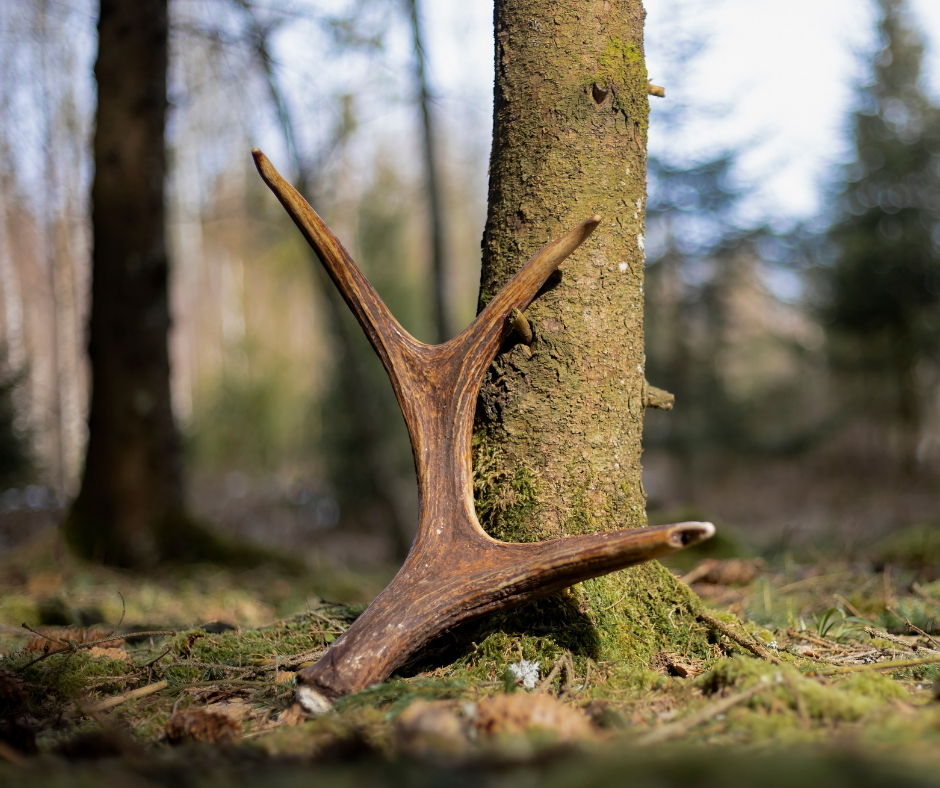Many Idaho recreationists enjoy collecting horns shed by ungulates over the winter months. Known as shed hunting- it is practiced by many as either a hobby or just part of a weekend outing in early spring. It’s great for all ages, hunters and nonhunters. Others take it more seriously, collecting antlers to turn a profit.
Antlers from these ungulates are commonly found in areas where they spend the winter months. Typically, mule deer and moose shed from late December through January, and elk from mid-winter through April. The antlers are shed at one of the most stressful times of year for wildlife. When humans come near, the animals react, which causes them to burn extra calories, decreasing their chance of survival. Any human presence in ungulate calving areas can cause pregnant animals to lose their calves due to the added stress.
The legalities
Currently, Bill 1143 is being presented to legislatures in the Idaho Senate that will authorize the Idaho Fish and Game Commission to regulate shed hunting. This allows them to set seasons for collecting antlers shed by deer, elk, moose, and pronghorn. Please check with Idaho Fish and Game for updates and changes as this bill progresses.
If Bill 1143 passes, protection will be increased for ungulates affected by too much pressure from shed hunters. It might also help deter serious collectors from nearby regulated states from coming to Idaho wintering areas to find antlers before anyone else. Some shed hunters do engage in questionable behavior to get the animals to drop their antlers-stressing them even further. Shed collection is estimated to generate $1 billion annually in North America. Because of this financial pressure, best practices, and wildlife protection can be overlooked without regulations in place.
While some parts of Idaho wilderness may not need regulation, the commission plans to evaluate the areas where winters are more severe and wildlife are unable to avoid people in their habitats.
Best practices
- Leave them alone- Deer and elk spook easily. Take care not to disturb them and allow them to rest and eat. By not stressing animals this time of year it increases the herd’s chances of being stronger, larger, and healthier through summer and into fall. Consider delaying your search until late spring.
- Look for land restrictions, permissions, and access- Always check with landowners before searching on private property. Some public lands might also be closed during early spring to protect wintering wildlife. This includes motorized vehicles, horseback, or those on foot. And remember, if a road or trail is open, always assess the situation and whether your mode of travel will potentially cause unnecessary damage. For questions about travel management plans or areas protected, contact your local U.S. Forest Service, Bureau of Land Management, or Fish and Game regional office.
- Be in close control of your dog, or leave Fido at home. Keep your pet close and on a leash when big game animals are near and head elsewhere.
- Do your homework- Use optics, like binoculars, to spot shed antlers from a distance, and to identify far away herds. When the animals have moved on, you can return and look for sheds.
Can you keep it?
- Idaho shed antler hunters can only lawfully possess antlers that are shed naturally from big game.
- The self-issued Salvage Permit must be completed for animals that have died of natural causes or from a road kill. It is available at Roadkill & Salvage | Idaho Fish and Game.
- The horns of Idaho bighorn sheep that have died of natural causes may be recovered but may not be sold, bartered, or transferred to another person without a permit from Fish and Game. Bighorn sheep horns must be permanently marked with a metal pin at an Idaho Fish and Game regional office within 30 days of recovery.




